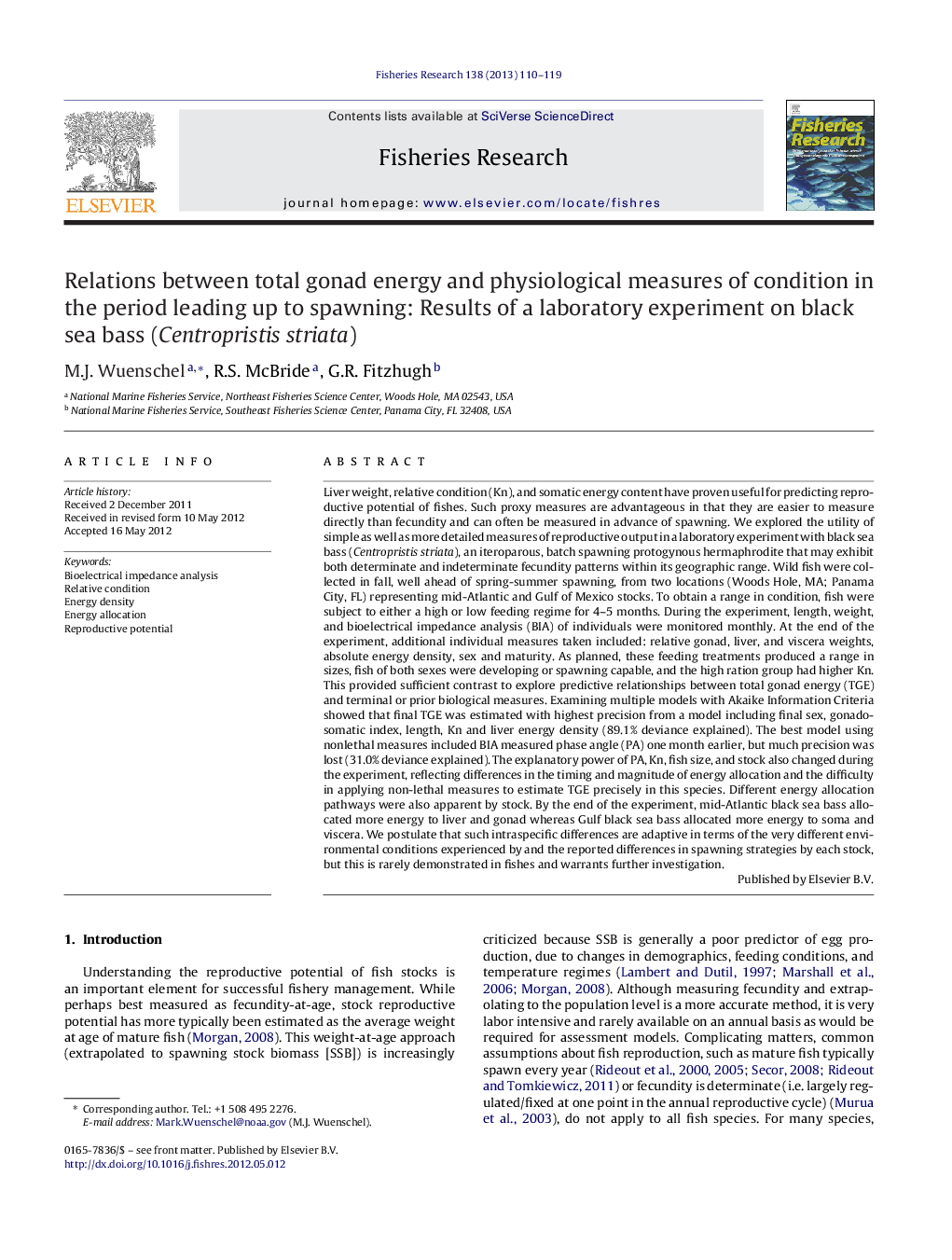| کد مقاله | کد نشریه | سال انتشار | مقاله انگلیسی | نسخه تمام متن |
|---|---|---|---|---|
| 4543224 | 1626830 | 2013 | 10 صفحه PDF | دانلود رایگان |

Liver weight, relative condition (Kn), and somatic energy content have proven useful for predicting reproductive potential of fishes. Such proxy measures are advantageous in that they are easier to measure directly than fecundity and can often be measured in advance of spawning. We explored the utility of simple as well as more detailed measures of reproductive output in a laboratory experiment with black sea bass (Centropristis striata), an iteroparous, batch spawning protogynous hermaphrodite that may exhibit both determinate and indeterminate fecundity patterns within its geographic range. Wild fish were collected in fall, well ahead of spring-summer spawning, from two locations (Woods Hole, MA; Panama City, FL) representing mid-Atlantic and Gulf of Mexico stocks. To obtain a range in condition, fish were subject to either a high or low feeding regime for 4–5 months. During the experiment, length, weight, and bioelectrical impedance analysis (BIA) of individuals were monitored monthly. At the end of the experiment, additional individual measures taken included: relative gonad, liver, and viscera weights, absolute energy density, sex and maturity. As planned, these feeding treatments produced a range in sizes, fish of both sexes were developing or spawning capable, and the high ration group had higher Kn. This provided sufficient contrast to explore predictive relationships between total gonad energy (TGE) and terminal or prior biological measures. Examining multiple models with Akaike Information Criteria showed that final TGE was estimated with highest precision from a model including final sex, gonadosomatic index, length, Kn and liver energy density (89.1% deviance explained). The best model using nonlethal measures included BIA measured phase angle (PA) one month earlier, but much precision was lost (31.0% deviance explained). The explanatory power of PA, Kn, fish size, and stock also changed during the experiment, reflecting differences in the timing and magnitude of energy allocation and the difficulty in applying non-lethal measures to estimate TGE precisely in this species. Different energy allocation pathways were also apparent by stock. By the end of the experiment, mid-Atlantic black sea bass allocated more energy to liver and gonad whereas Gulf black sea bass allocated more energy to soma and viscera. We postulate that such intraspecific differences are adaptive in terms of the very different environmental conditions experienced by and the reported differences in spawning strategies by each stock, but this is rarely demonstrated in fishes and warrants further investigation.
Journal: Fisheries Research - Volume 138, February 2013, Pages 110–119